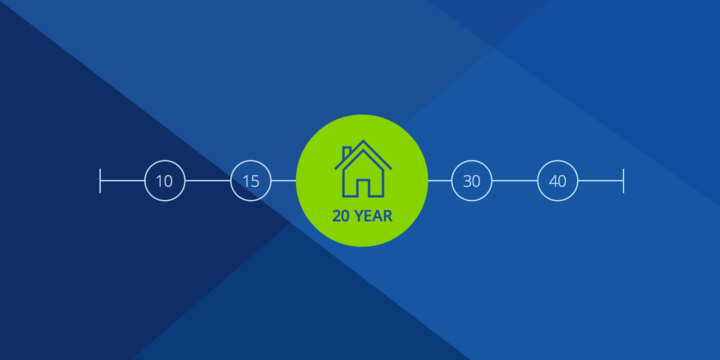How to Calculate PMI on a Mortgage?
Ever wonder how much you'll pay in PMI or how it's calculated? We cover just that.


Written by Alycia Lucio on November 12, 2024
Reviewed by Neil Swanson
In today’s market, private mortgage insurance (PMI) is more common than you may think. According to a 2023 Zillow survey, 38% of homeowners reported paying for PMI, a monthly fee that helps protect the lender if the borrower defaults on their home loan.
Lenders typically require PMI when your down payment is less than 20% of the home’s purchase price, and you’re using a conventional mortgage to finance the remaining balance. PMI is added to your monthly mortgage payment at a predetermined rate, and once you build enough equity in your home by paying down your principal, PMI typically falls off automatically.
Paying PMI allows you to purchase a home with a mortgage, with the flexibility of putting down less cash upfront. But you’ll want to budget for the longer-term trade-off of the additional monthly cost. In this article, we’ll show you how PMI is calculated and what factors impact the rate you receive.
How is PMI calculated?
Your PMI payments are calculated by multiplying your loan amount by the PMI rate, and then divided by 12 to represent your monthly PMI cost. Your PMI rate typically ranges between 0.58% and 1.85% of the loan amount (see how your PMI rate is determined). You can use this range to estimate how high or low your PMI payments may be.
(Loan amount x PMI rate) / 12 = Monthly PMI cost
Example: Let's say you're buying a $300,000 home with a $270,000 mortgage. After assessing your other financial criteria, your lender sets your PMI rate at 0.65%. Here’s how you’d estimate your PMI cost:
$270,000 x 0.0065 = $1,755 (Annual PMI cost)
$1,755 / 12 = $146.25 (Monthly PMI cost)
In this example, you’d pay $146.25 monthly in PMI in addition to your regular monthly mortgage payments. Keep in mind that your actual PMI cost could be higher or lower based on your specific financial factors, your lender’s policies, and the policies of the mortgage insurance provider.
How much does PMI cost?
On average, mortgage borrowers who pay PMI spend an additional $30 to $70 for every $100,000 borrowed. So, if you take out a home loan of $300,000 and put less than 20% down, you’ll pay up to $210 in mortgage insurance on top of your regular mortgage payment. Your PMI costs depend on the PMI rate you qualify for.
How is your PMI rate determined?
Private insurance companies provide PMI. Your lender will arrange PMI for you and set your PMI rate based on many factors, including:
1. The property value
The value of the property is officially determined during the home appraisal. While the property doesn’t directly affect your PMI rate, it affects your borrowing amount, down payment amount, and LTV — all of which determine whether you’ll need PMI, how much you’ll pay for it, and how long you’ll have it. A property with a high value may mean the home will appreciate faster over the years, which can lead to faster PMI removal.
2. The total amount you're borrowing
Larger loan amounts are typically associated with higher PMI premiums to mitigate the lending risk of higher borrowing amounts with smaller down payments. The closer you get to a 20% down payment, the lower your rate will be. For instance, the PMI rate when you make a 10% down payment will be lower than if you’d made a 5% down payment.
To get an estimate of your borrowing amount, get pre-qualified with us at Zillow Home Loans*. The process takes as little as three minutes and won’t impact your credit score.
3. Your loan-to-value ratio (LTV)
LTV measures the appraised value of a home against your borrowing amount. It is calculated by dividing the loan amount by the property value, and then multiplying it by 100 to get a percentage. If you’re buying a $300,000 home with a $270,000 mortgage, your LTV would come to 90%.
The higher the LTV, the less equity you’ll have from the start, and the higher your PMI premium will be. Making a larger down payment, even if it’s not 20%, will lower your LTV, PMI premium, and monthly mortgage payments.
4. Your credit score
Credit score plays a role in the PMI rate you receive, similar to how it impacts your mortgage rate. A higher credit score indicates less lending risk, which can help you qualify for a lower PMI rate. But there are also outside market factors that may contribute to PMI rates skewing higher or lower from time-to-time.
5. Your debt-to-income ratio (DTI)
Your debt-to-income ratio (DTI) indicates how much debt you’re managing against your monthly income. This determines your ability to take on more debt and the risk involved, which affects how much you can borrow and, in some cases, the down payment size you’ll need to make.
6. The loan term
Your loan term is the amount of time you have to repay your loan. The most common loan terms are 30-year and 15-year. The shorter the loan term, the less risky it is for the lender. This is why shorter term loans sometimes have lower PMI rates. The trade-off is that shorter-term loans typically require borrowers to have a higher income and higher credit scores to qualify.
7. The type of loan
You’ll have the option of choosing between a fixed-rate or adjustable-rate mortgage (ARM). Both of these mortgage options will affect how your interest is calculated as a percentage of your mortgage payment. ARMs are generally seen as riskier for lenders, since the interest rate is variable. For this reason, ARMs typically have higher PMI rates than fixed-rate mortgages.
You can use our Mortgage Calculator to estimate your monthly payment, including PMI, based on your down payment amount, interest rate, loan term, and home price.
*An equal housing lender. NMLS #10287
How much home can you afford?
At Zillow Home Loans, we can pre-qualify you in as little as 5 minutes, with no impact to your credit score.
Zillow Home Loans, NMLS # 10287. Equal Housing Lender
Get pre-qualifiedHow much home can you afford?
See what's in reach with low down payment options, no hidden fees and step-by-step guidance from us at
Zillow Home Loans.
Zillow Home Loans, NMLS # 10287. Equal Housing Lender
Calculate your BuyAbility℠
Related Articles
Get a mortgage with Zillow Home Loans
Go from dreaming to owning with low down payment options, competitive rates and no hidden fees. A dedicated loan officer will guide you until you have your keys in hand.

Zillow Home Loans, NMLS #10287. Equal Housing Lender.



